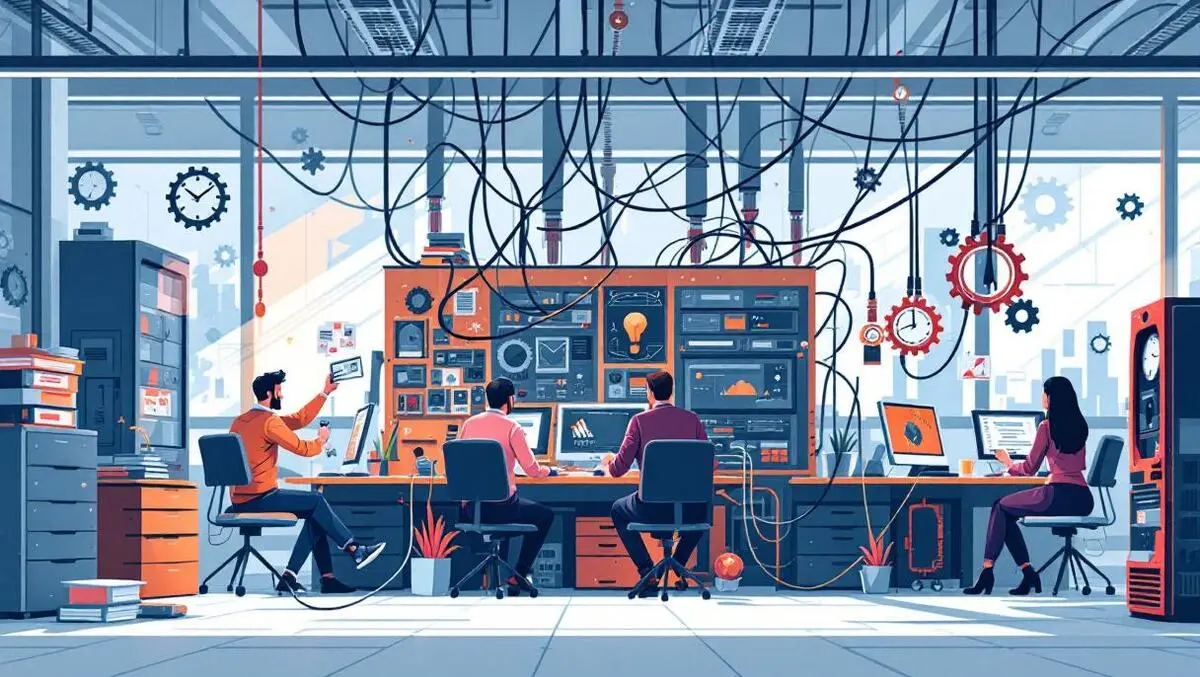
Legacy tech & technical debt threaten modernisation goals
Technical debt and outdated legacy systems are hampering major technology transformation initiatives at global enterprises, according to new research from Pegasystems conducted by Savanta.
The survey gathered responses from more than 500 IT decision makers across North America, the United Kingdom, France, Australia, and Germany, focusing on challenges tied to technical debt and efforts to modernise legacy technology.
Two out of every three respondents (68%) indicated that their organisations' reliance on legacy systems and applications is obstructing the adoption of newer, potentially more modern technologies such as artificial intelligence (AI).
Concerns related to technical debt were prominent among participants, with 88% expressing apprehension over how technical debt affects their ability to keep pace with more agile and innovative competitors. Among them, 29% described their concern as either 'clear' or 'significant'.
The connection between legacy technology and customer experience also emerged as a critical issue. When asked about the impact of legacy reliance on customer loyalty, 57% of respondents agreed that it is 'likely' or 'highly likely' to drive customers away due to the substandard experiences resulting from outdated systems.
The research provided additional insights into the scale and nature of legacy dependency. Nearly half of the IT leaders surveyed (48%) reported that they are unable to discontinue support for legacy applications, even if they would like to, as these systems remain business-critical. Furthermore, 47% said their oldest legacy application is between 11 and 20 years old, while 16% continue to operate systems that have been in use for between 21 and 30 years.
Legacy systems are also seen to be reducing organisational effectiveness. A majority (68%) said these systems prevent their organisations from operating optimally. The primary challenges identified include the time required for maintenance (44%), the fragmentation caused by disconnected systems (37%), and the cost associated with keeping legacy systems running (37%). Only 7% of IT decision makers felt legacy applications posed no problems to their business.
Investment priorities within organisations were also addressed. Most (74%) said their business prioritises investments aimed at boosting profitability, rather than directing funds towards improving customer experience through modernisation of legacy applications. This aligns with previous Pega research among consumers, where 69% felt that companies were focusing resources towards profit over customer experience in their IT investments.
The impact of legacy technology on customer service metrics was also highlighted. Of those surveyed, 32% noted that the average resolution time for customer queries had increased by between 26% and 50% over the past year, a change they attributed to staff having to use multiple or outdated systems.
"This study highlights how easy it can be for enterprises to get dragged down by outdated systems that are unwieldy to use and resource-intensive to maintain – perpetuating an organisational culture of waste," Don Schuerman, Chief Technology Officer at Pega, commented on the findings.
"While the bottom-line cost to businesses is significant, the real cost of technical debt is its impact on the experiences that today's customers both demand and deserve. It's time for businesses to change their mindset, harness the power of generative AI through innovations like Pega Blueprint, to enact fast, efficient legacy transformation, and free themselves from the vicious cycle of technical debt…before they lose their customers for good," Schuerman added.
Pega's research employed a definition of technical debt and legacy systems as outdated hardware, software, or technology platforms that continue to be used due to their critical business roles, despite the challenges they introduce, such as limited scalability, security vulnerabilities, high maintenance expenses, and incompatibility with modern technology.


